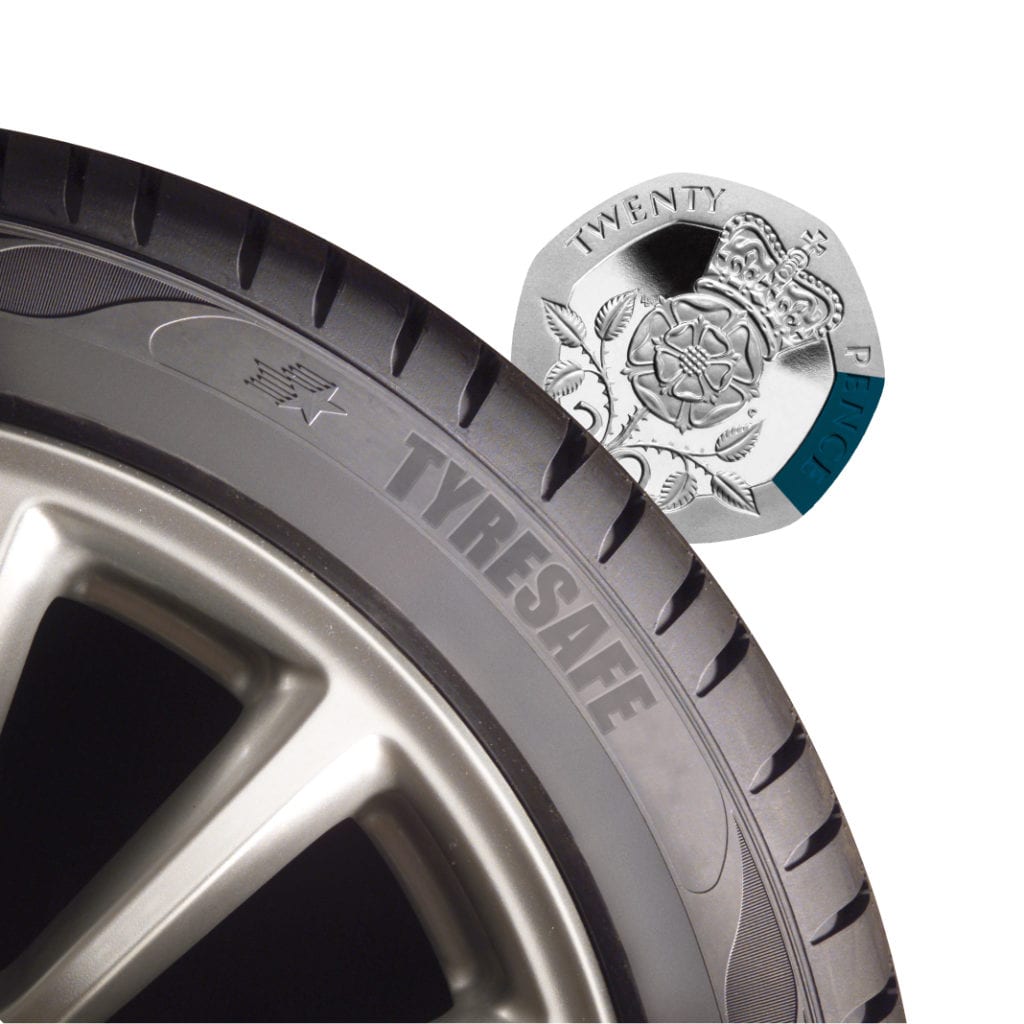[vc_row full_width=”stretch_row” css=”.vc_custom_1596124948550{background-color: #f1f1f1 !important;}”][vc_column width=”1/2″]
Tyre sidewall markings and what they stand for
1) Manufacturer’s name or Brand name
2) Model or Pattern Code
3) Tyre Size
4) Service description
5) ECE R30 Conformity Approval Number
6) EEC Noise Approval Number
7) USA Dept of Transport Manufacturer’s code
8) Date of Manufacture
9) USA UTQG Quality Grades **
10) USA Maximum Tyre Loading **
11) USA Maximum Tyre Inflation Pressure **
12) Denotes Tubeless Construction
13) Safety Warning
14) Direction of Rotation [Directional Tyres only]
15) Outer/Inner sidewall [Asymmetric Tyres Only]
16) Extra Load
16a) Alternative marking to “Extra Load”
17) TWI – Tread Wear Indicators[/vc_column_text][/vc_column_inner][/vc_row_inner][/vc_column][vc_column width=”1/2″][vc_single_image image=”8770″ img_size=”full”][vc_column_text]** These markings are required by North American legislation and have no significance in the UK & Europe[/vc_column_text][/vc_column][/vc_row][vc_row full_width=”stretch_row”][vc_column]
Tyre markings explained
Manufacturer’s name or Brand name
This is the name of the company who manufactured the tyre, but also (in some cases) the range the tyre belongs to.
Model or Pattern Code
The model/pattern refers to the range which the tyre belongs to. If it does not directly follow the manufacturer/brand name, it will be found on the opposite side of the tyre.
Tyre Size
This is the nominal width of the tyre in millimetres, the height to width aspect ratio, what kind of design has been used and the rim diameter code.
The aspect ratio is the sidewall height as a percentage of the width of the tire. The design may be represented with a B, D or R and is an optional symbol. Most common is R, which stands for Radial. The rim diameter code is the diameter in inches of the rim that the tires are designed to fit.
Service description
This is the Load Index and Speed Rating of the tyre. These will differ for each vehicle, but you can use our helpful Load Index table below and Speed Rating table to decipher your own.
ECE R30 Conformity Approval Number
This indicates that the tyres conform with European safety and environmental standards.[/vc_column_text][/vc_column_inner][vc_column_inner width=”1/2″][vc_column_text]EEC Noise Approval Number
This indicates that the tyres do not exceed the maximum noise permitted by tyres of its size.
Date of Manufacture
This will be a 4-digit number, where the first 2 numbers represent the week in which the tyre was manufactured and the second 2 numbers representing the year.
Safety Warning
This will differ for each tyre and is an opportunity for the manufacturer to warn you of any additional details you need to be aware of for optimum safety.
Direction of Rotation [Directional Tyres only]
Directional tyres differ from standard tyres as they are designed to travel in one specific direction. If your tyre has this marking, you need to get them professionally fitted/aligned to ensure they are on the correct side of the axle.
Outer/Inner sidewall [Asymmetric Tyres Only]
This label lets you know which side of the tyre is considered the “outer” or “inner” sidewall, so you know which side faces the vehicle.
Extra Load
This denotes a higher load capacity than a standard car tyre. It may alternatively be labelled as “reinforced”.
TWI – Tread Wear Indicators
These are raised areas at the base of the tread grooves to serve as a visual warning of when the tyre is approaching or at the minimum legal limit.[/vc_column_text][/vc_column_inner][/vc_row_inner][/vc_column][/vc_row][vc_row full_width=”stretch_row” css=”.vc_custom_1704817046048{padding-top: 40px !important;padding-bottom: 40px !important;background-color: #f1f1f1 !important;}”][vc_column width=”1/2″][vc_single_image image=”8772″ img_size=”full”][/vc_column][vc_column width=”1/2″]
How can I read the load and speed markings on my tyre?
These load and speed markings are moulded on the sidewall as a Load Index (e.g. ‘91’ in table 1) for load carrying capacity and a Speed Symbol (e.g. ‘V’ in table 2) for speed capability.
It is strongly recommended to always fit tyres that have a speed capability and load index at least equal to those originally specified by the vehicle manufacturer.[/vc_column_text][/vc_column][/vc_row][vc_row][vc_column]

